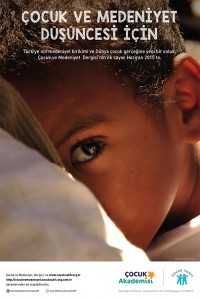Adolesan Cinsel İstismarı ile İlgili Hekimlerin Bilgi, Tutum ve Davranışları
Adolesan, cinsel istismar, kontrasepsiyon, adli ve tıbbi yönetim
Adolesan Cinsel İstismarı ile İlgili Hekimlerin Bilgi, Tutum ve Davranışları
Adolescent, sexual abuse, contraception, forensic and medical management,
___
- Polat, O. (2007). Tüm boyutları ile çocuk istismarı. Ankara: Seçkin Yayıncılık.
- Yates, A. (1999). Sexual abuse of children. J.M. Wiener (Ed.). In: Textbook of Child Adolescent Psychiatry (p.699-709). second ed. Washington, American Psychiatric Press.
- Pereda, N., Guilera, G., Forns, M., Gomez-Benito, J. (2009) The international epidemiology of child sexual abuse: a continuation of Finkelhor. Child Abuse Negl, 33, 331-342.
- Alikasifoglu, M., Erginoz, E., Ercan, O., Kaymak, DA., Uysal Ö., İlter, Ö. (2006). Sexual abuse among female high school students in Istanbul, Turkey. Child Abuse Negl, 30, 247-255.
- Aktepe, E., Işık A., Kocaman O., Özyay Eroğlu, F. (2013). Demographic and Clinical Characteristics of Children and Adolescents Examined in a University Hospital Who Are Victims of Sexual Abuse. New Sempozyum Journal, 51, 115-120.
- McLean, CP., Morris, SH., Conklin, P., Jayawickreme, N., Foa, EB. (2014). Trauma Characteristics and Posttraumatic Stress Disorder among Adolescent Survivors of Childhood Sexual Abuse, 29, 559- 566.
- Spencer N, Devereux E, Wallace A, Sundrum R, Shenoy M, Bachuss C, et al. (2005). Disabling conditions and registration for child abuse end neglect: a population-based study. Pediatrics, 116, 609-613.
- Fiş NP, Arman A, Kalaça S, Berkem M. (2010). Psychiatric Evaluation of sexual abuse cases: A clinical representative sample from Turkey. Child Youth Serv Rev, 32, 1285-1290.
- Finkel, MA., Lind, ME. (2011). Sexual Abuse and Assault. In: Textbook of adolescent healthcare. (p. 1702-1708). Fisher MM, Kreipe RE, Rosenfeld WD (eds). USA, The Donohue Grup.
- Hussey, JM., Chang, JJ., Kotch, JB. (2006). Child maltreatment in the United States: prevalence, risk factors and adolescent health consequences. Pediatrics, 118, 933-942.
- Campbell, R., Greeson, M., Bybee, DI., Kennedy, A., Patterson, D. (2010). Adolescent Sexual Assault Victims’ Experiences with SANE-SARTs and the Criminal Justice System. 2007-WG-BX-0012 FINAL REPORT. https://www.ncjrs.gov/pdffiles1/nij/grants/234466.pdf adresinden 8 Ekim 2015 tarihinde erişildi.
- Haydar, E. (2007). 5237 Sayılı Türk Ceza Kanunu (1.bs.) Ankara: Yayın Matbaacılık ve Ticaret İşletmesi. S.1303.
- Gerçek, LÇ. (2011). Yargıtay kararlarıyla cinsel taciz suçu. AUHFD, 60, 47-82.
- Çocuk Koruma Kanunu, Yayımlandığı Resmi Gazete: Tarih: 15/7/2005 Sayı: 25876, Kabul Tarihi: 3/7/2005, Kanun Numarası: 5395.
- Loeber, O. (2014). Wrestling with the hymen: Knowledge and attitudes. Eur J Contracept Reprod Health Care, 23, 1-6.
- Raphael, D.D. (1998). Commentary: The ethical issue is deceit. BMJ, 316, 460.
- Kılıç, C., Kalay, R., Kılıç, E. (2014). Kızlık Zarı ve Kabahatli Sayılma. JCAM. doi: 10.4328/JCAM.2597.
- Dilbaz, N., Erkmen, H., Seber, G., Kaptanoğlu, C., Baysal, B., Tekin, D. (1992). Üniversite öğrencilerinin cinsellikle ilgili tutumları. Ankara Tıp Dergisi 14, 17-24.
- Özan, S., Aras, Ş., Şemin, S., Orçın, E. (2004). Dokuz Eylül Üniversitesi Tıp Fakültesi öğrencilerinin cinsel tutum ve davranış özellikleri. DEÜ Tıp Fakültesi Dergisi 18, 27-39.
- TCSB Kadın Cinselliği Bilgilendirme Dosyası 5. http://www.cetad.org.tr/CetadData/ Book/26/269201116550-bilgilendirme_dosyasi_5.pdf 30 Ekim 2015 tarihinde erişildi.
- Türkiye’de çocuk hakları ve cinsel istismar bilgi notu. http://www.cocukhaklariizleme.org/wp-content/ uploads/FactSheet-F-WEB-13nov14.pdf 30 Ekim 2015 tarihinde erişildi.
- Gomez, J., Becker, S., O’Brien K., Spirito, A. (2015). Interactive Effect of Child Maltreatment and Substance Use on Depressed Mood Among Adolescents Presenting to Community-Based Substance Use Treatment. Community Ment Health J, PMID: 26017474.
- Varma, S., Gillespie, S., McCracken, C., Greenbaum, VJ. (2015). Characteristics of child commercial sexual exploitation and sex trafficking victims presenting for medical care in the United States. Child Abuse Negl, 44, 98-105.
- Jenny, C. (1992). The role of the physician as medical detective. In: Heger A, Emans SJ (eds). p.51–61. Evaluation of the sexually abused child. Oxford, Oxford University Press.
- Lacey, HB. (1990). Sexually transmitted diseases and rape: the experience of a sexual assault centre. Int J STD AIDS, 1, 405-409.
- Centers for Disease Control and Prevention. (2005). Antiretroviral postexposure prophylaxis after sexual, injection-drug use, or other nonoccupational exposure to HIV in the United States: recommendation from the US Department of Health and Human Services. MMWR Recomm Rep, 54, 1-20.
- Eliaçık, K., Çiftdoğan, Yılmaz D. (2015). Cinsel istismara uğramış adolesanlarda cinsel yolla bulaşan hastalıkların yönetimi. J Pediatr Inf, 9, 000-000. doi: 10.5152/ced.2015.1786.
- Committee on Infectious Disease American Academy of Pediatrics. (2012). Sexually transmitted infections in adolescents and children. In: Pickering LK (ed.). p.176-85. Red Book: Report of the Committee on Infectious Diseases, 29th edition, Elk Grove Village, IL: American Academy of Pediatrics.
- Centers for Disease Control and Prevention. (2007). Update to CDC’s sexually transmitted diseases treatment guidelines, 2006. MMWR Recomm Rep, 56, 332-6.
- ISSN: 2458-8431
- Başlangıç: 2016
- Yayıncı: Çocuk Vakfı
Tarihsel Süreç İçerisinde Çocuk ve Çocukluk Kavramları
Adolesan Cinsel İstismarı ile İlgili Hekimlerin Bilgi, Tutum ve Davranışları
Kayı ELİAÇIK, Nazmiye Aslı SÜRGEL, Ali KANIK, Aylin YETİM, Nurullah BOLAT, Ali Rahmi BAKİLER
Enver Demirel YILMAZ, Mehmet PALANCI, Özge ÜNAL, Cansu GÖK, Müge BALKİ, Selen KURT
ÜYÜKEP Programının Üstün Yetenekli Öğrencilerin Öz-düzenleme Becerilerini Geliştirmeye Etkisi
Hasan Said TORTOP, Merve TOPAL
İlk Hakkından Mahrum Kalan Yeni Nesil Üzerine: Zehirlenen Çocukluk
Sosyal Risk Altındaki Çocuklar İçin Sosyal Hizmetler: 2000 Sonrasına İlişkin Bir Değerlendirme
Medya Okuryazarlığı Dersine Yönelik Millî Eğitim Bakanlığı Politikaları
